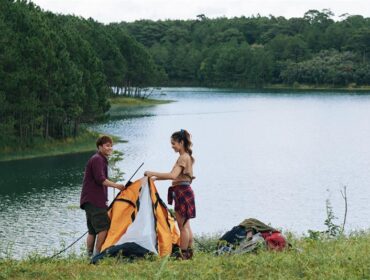There’s nothing quite like the thrill of rare animal sightings in the wild. These encounters are humbling, unforgettable, and often completely unexpected. America’s vast and varied landscapes – ranging from remote deserts and alpine meadows to ancient forests and protected wetlands – serve as havens for some of the continent’s most elusive wildlife. Whether you’re a seasoned naturalist or a curious traveler, here’s your guide to some of the rarest animal sightings in the United States and where you just might be lucky enough to witness them.
1. Mountain Lion – Big Sur, California

Sleek, powerful, and notoriously elusive, the mountain lion – also known as a cougar or puma – is the ghost of the western wilderness. Though they range across much of the western U.S., sightings are extremely rare due to their solitary and stealthy nature.
Where to look: Big Sur, California, especially around the Ventana Wilderness, is a hotspot. These cats roam silently through redwood forests and steep canyons. Dusk and dawn are the best times to spot them, but most people only catch a fleeting glimpse or see paw prints on a trail.
Tip: Use trail cameras or join guided wildlife hikes that increase your odds of spotting big cats from a safe distance.
2. American Marten – Adirondack Mountains, New York

The American marten is a small, tree-dwelling carnivore in the weasel family, often mistaken for a mink or fisher. Once extirpated in many areas due to trapping and habitat loss, martens are making a comeback in some regions.
Where to look: The High Peaks region of the Adirondack Mountains in New York is one of the best places to see martens in the Eastern U.S. They thrive in mature coniferous forests and are most active in winter when their tracks are easy to spot in fresh snow.
Best time to go: Early morning in snowy conditions when they hunt and play across tree trunks and forest floors.
3. Red Wolf – Eastern North Carolina

Once declared extinct in the wild, the red wolf is now one of the rarest canids in the world, with fewer than 20 believed to exist in the wild today.
Where to look: The Alligator River National Wildlife Refuge in eastern North Carolina is the only place where red wolves still roam free. They inhabit coastal plains, swamps, and mixed forests.
Pro tip: Join a red wolf howling safari or interpretive program hosted by local conservation groups or park rangers. Seeing them is extremely rare, but hearing their distinct calls under a full moon is unforgettable.
4. Black-Footed Ferret – Badlands, South Dakota

Once thought to be extinct, the black-footed ferret is a remarkable conservation success story. These nocturnal predators rely almost entirely on prairie dog colonies for survival.
Where to look: The Conata Basin in Badlands National Park is one of the few places where black-footed ferrets have been successfully reintroduced. While spotting one in the wild requires patience and luck, their presence signals a healthy prairie ecosystem.
Best time: Night drives during summer or fall, when ferrets are most active and occasionally spotted near burrow entrances with a flashlight (used respectfully and with permits).
5. Wolverine – Glacier National Park, Montana

The wolverine is legendary for its ferocity, independence, and strength. But it’s also one of the rarest and least studied mammals in North America.
Where to look: Glacier National Park is one of the few strongholds for wolverines in the lower 48 states. These creatures inhabit remote alpine terrain and travel vast distances in search of food.
What to know: Spotting a wolverine is a once-in-a-lifetime event. Look for their large, snowshoe-like prints and track patterns in the spring snowpack. Some hikers with extreme luck have seen them from distant ridgelines.
6. Whooping Crane – Aransas National Wildlife Refuge, Texas

The whooping crane is America’s tallest bird and among its most endangered. With a wingspan of 7 feet and a bright white plumage, it’s a striking sight – but one that few people ever witness.
Where to look: The Aransas National Wildlife Refuge along the Gulf Coast of Texas hosts the last naturally migrating flock of whooping cranes each winter. Birdwatching tours by boat or on foot offer the best opportunities.
When to visit: November to March is peak season for sightings.
7. California Condor – Vermilion Cliffs, Arizona

The California condor, once down to just 27 individuals, has rebounded through intensive captive breeding. With a wingspan nearing 10 feet, it’s North America’s largest flying bird.
Where to look: The Vermilion Cliffs National Monument in northern Arizona is a primary release site. Visitors often spot condors soaring above cliffs or resting on rock ledges near the Condor Viewing Site along Highway 89A.
Pro tip: Arrive mid-morning when thermal currents lift the condors into flight, and bring a spotting scope or zoom lens.
8. Florida Panther – Everglades, Florida

The Florida panther is a subspecies of cougar found only in the forests and swamps of southern Florida. With just around 200 individuals left, they’re extremely rare and shy.
Where to look: Your best bet is Fakahatchee Strand Preserve or Big Cypress National Preserve, where panther crossings are sometimes spotted at dawn or dusk.
Travel note: Motion-triggered cameras have captured them more than hikers have, but recent trail sightings have given hope to conservationists and wildlife lovers.
9. Bighorn Sheep – Zion National Park, Utah

Though not endangered like others on this list, desert bighorn sheep are elusive and blend seamlessly with their rocky surroundings, making sightings feel rare and special.
Where to look: The east side of Zion National Park, especially along the Canyon Overlook Trail or near the switchbacks on Highway 9, is ideal. They often perch on precarious cliff edges with ease and agility.
When to visit: Fall and spring are best, when cooler temperatures bring them closer to accessible viewpoints.
10. American Pine Marten – Olympic National Park, Washington

Not to be confused with the American marten of the East, the Pacific pine marten is even rarer and lives in remote old-growth forests of the Pacific Northwest.
Where to look: High elevation forests in Olympic National Park and the Cascades are prime habitats. These tree-loving predators are active during twilight and often seen chasing squirrels through the canopy.
Advice: Patience and silence are key; use binoculars and watch for treetop movement.
Planning Your Wildlife Adventure
To responsibly enjoy these rare animal sightings, consider these tips:
-
Bring the right gear: A pair of binoculars, a high-zoom camera, and weather-appropriate layers are must-haves. A quiet approach and proper hiking boots are just as important.
-
Know before you go: Many of these animals are protected. Always maintain a safe, respectful distance. Some parks require special permits for wildlife photography or night viewing.
-
Use guides and tours: Local experts know where and when to look. Joining guided hikes or wildlife tours greatly increases your chances without disturbing fragile habitats.
-
Be patient and alert: Wildlife rarely appears on demand. Keep your eyes open for tracks, scat, feathers, or distant movement – these are signs you’re close.
Final Thoughts
The rare animal sightings are often about more than just the animal itself. They’re about being in the right place, at the right time, in nature’s quiet presence. You may spend hours in silence for a glimpse that lasts seconds – but those seconds can leave an impression for life. Whether it’s a condor catching the wind over a canyon or a wolf’s howl in the distance, these moments remind us that wildness still exists – and that we’re lucky enough to witness it.
FAQs: Rare Animal Sightings
Do I need permits to see these animals?
Some national parks and wildlife refuges may require entrance fees or permits, especially for night viewing or photography.
Are rare animal sightings dangerous?
Not if you follow park guidelines. Keep a safe distance, never feed animals, and use zoom lenses or binoculars.
What gear should I bring for wildlife watching?
Essentials include binoculars, a camera with zoom, sturdy footwear, layered clothing, and a field guide or wildlife app.
Can I increase my chances of a sighting?
Yes – go during early morning or dusk, move quietly, and consider hiring a local guide or joining a wildlife tour.
What if I don’t spot anything?
That’s nature! Even without a sighting, you’ll gain a deeper appreciation for America’s wild places and the life they protect.





